Zoho Inventory is a modern and flexible cloud inventory management system. Its suitable for a wide range of inventory management requirements and has some advance capabilities as well.
In this article we are going to take a look at the different item types that can be created within Zoho Inventory along with some use cases for when the specific item types could be used.
Non-inventory Item
Starting with the basics, you can create a standard non-stock or non-inventory item within Zoho Inventory. This simply means an item that you do not wish to track inventory quantities for.
This could be a service or a consumable item that moves quickly or is very low in value and not worth tracking quantities for.
Creating a non stock item starts by completing the new item form which lets you specify an range of parameters for your item such as –
- Name
- SKU
- Item image
- Unit of measure
- Dimension
- Weight
- Brand & Manufacturer
- Selling & Purchasing Prices
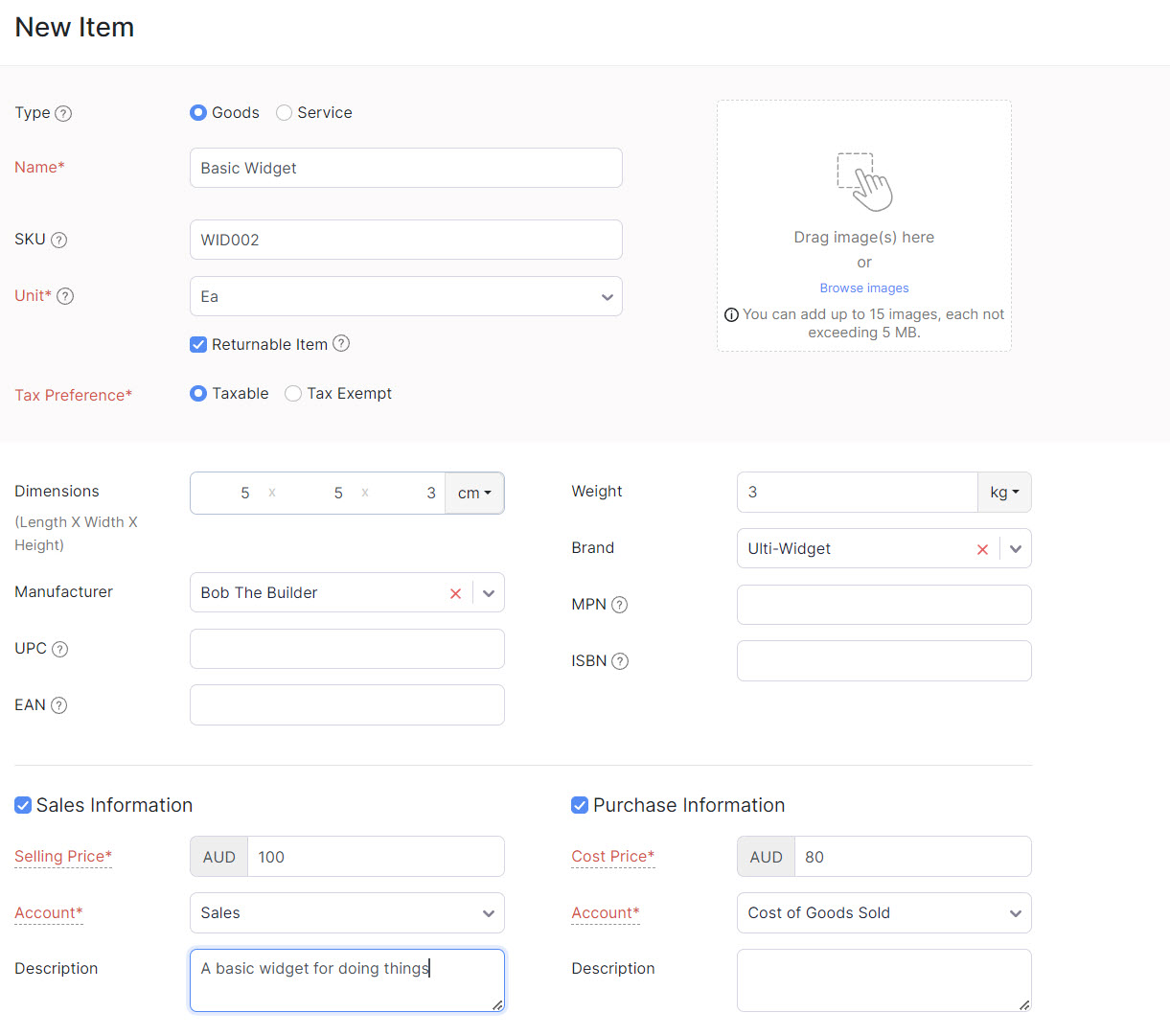
At the bottom of the new item form is the following checkbox ‘Track Inventory for this item’.
While this option is unticked, the item you are creating is considered a ‘non-inventory’ item.
It is as simple as that!

Inventory Tracked Item
The next type of item is, you guessed it, an inventory tracked item or stock item.
By enabling the ‘Track Inventory for this item’ checkbox you are enabling inventory tracking for that specific item and further parameters are available to you, such as –
- Enabling Serial or Batch Tracking
- Reorder Point
- Preferred Vendor
- Warehouse(s) & Opening stock values
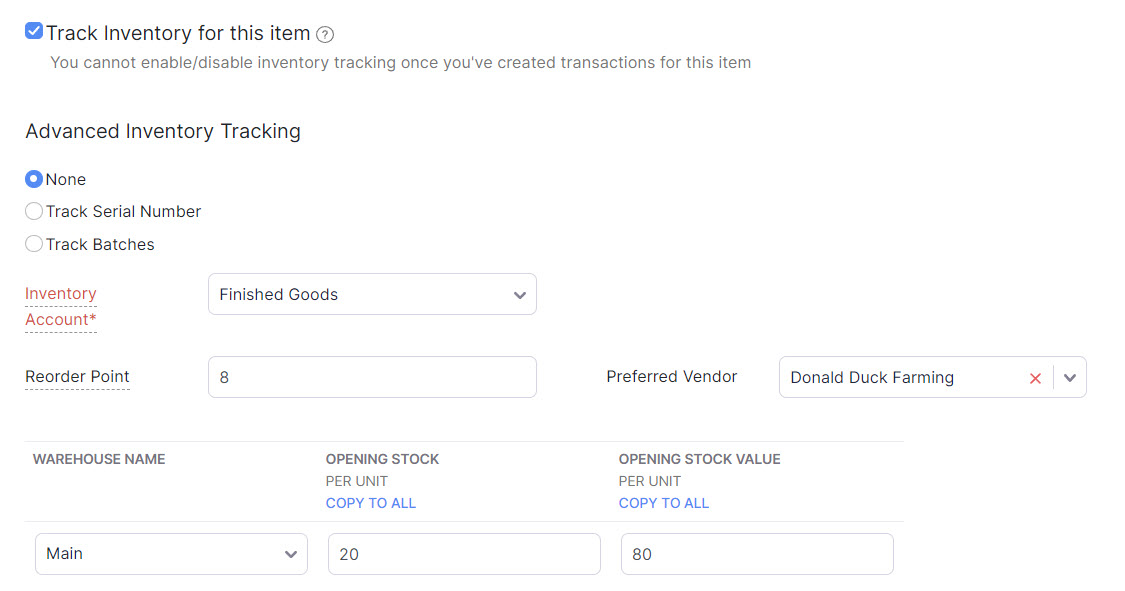
Its important to note you can enable any item to be an inventory tracked item at any time, but once it has been enabled you cannot disable this setting.
It’s import to consider why you need specific settings enabled before you enable them, including serial and batch tracking. Turning on these advanced features can add additional steps during your transactional processing and should only be enabled if absolutely required.
Composite Item
A composite item is commonly referred to as a Kit or Bundle. It is a primary item that comprises of multiple other items that come together to complete the bundle.
This could be a promotional package, E.g. shoes and socks that are sold together.
It could also represent a manufactured item, E.g. A skateboard, built from a board and wheels.
Zoho Inventory allows you define a Composite Item, by giving it a Name, SKU and Unit of Measure and then define the component items and their respective quantities.
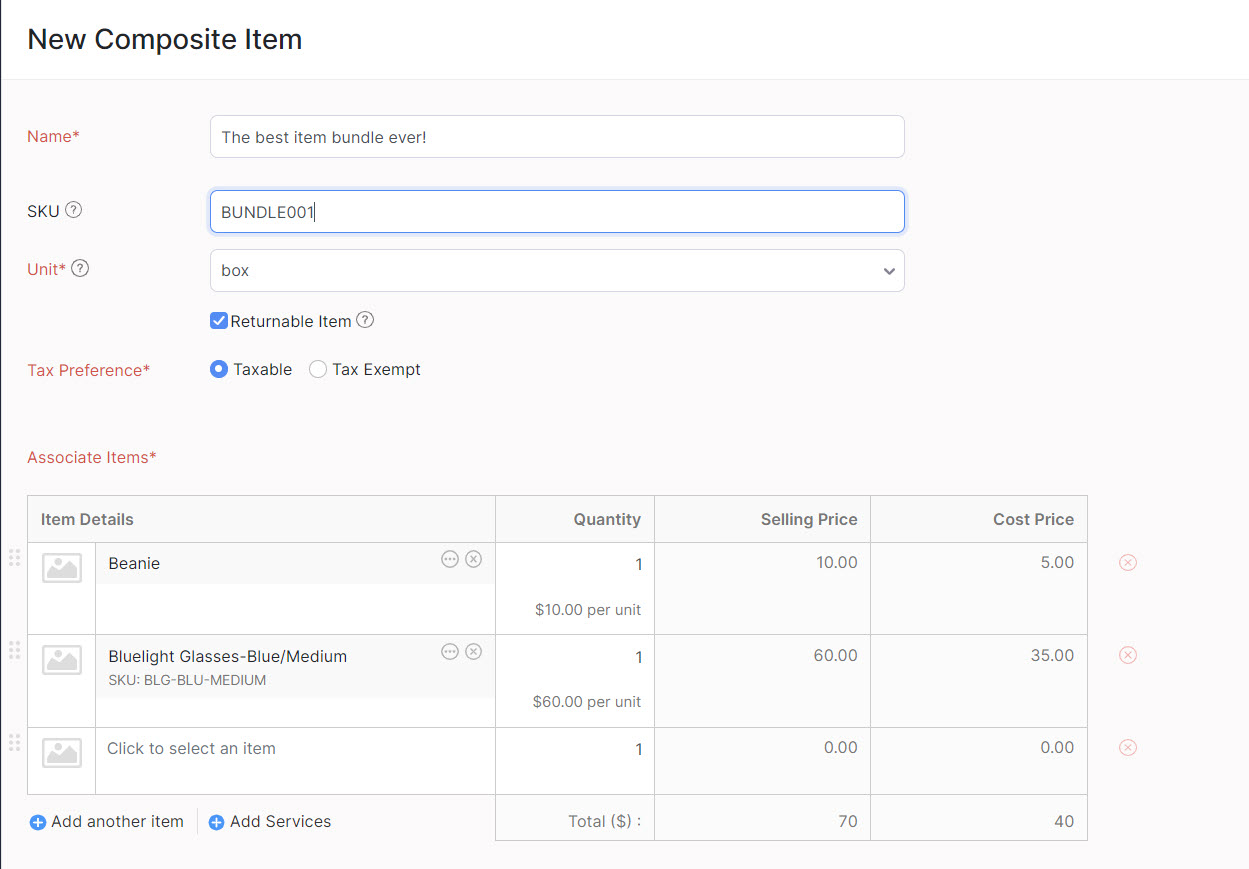
You can also assign the other typical item parameters to a composite item such as selling and purchase prices and enable serial tracking if required.
One critical step that is required when using composite items in Zoho Inventory is something called ‘Bundling’.
Create a Bundle is a transaction in Zoho Inventory can be performed on a composite item. The process takes the quantities required of the component items and creates the primary composite item. Think of this as your build or manufacturing process. When the bundling process is complete the quantities of the component items are reduced and the quantity of the composite item is increased.
You can create multiples of the composite item during the bundling process if required and you can also complete the bundling process from the sales order screen if needed.

Group Items
Let’s face it, setting up inventory items can be time consuming, especially if you are setting up a range of similar items. But what if there was an easier way to create and manage items with multiple variations?
In Zoho Inventory there is an inventory option called Item Groups. This allows us to set up a range of products with similar attributes (colour, size, material etc) and manage these groups more easily.
Groups don’t just stop with setting up variable items, you can also group individual items into a group, after they have been created, these items have some similarities; however they are standalone items. This can assist in easier management.
At the core of an Item Group are attributes. These attributes let you define the different variables within your group of items.
For example, we will be setting up shirts with the below variations:
Name: Shirt
Neckline (Attribute 1): Round, V-Neck
Colour (Attribute 2): Blue, Red, Green, Purple, Yellow, Pink
Size (Attribute 3): S, M, L, XL
Once an Item Group has been created and saved, you are unable to edit the attributes. Given this, we recommend planning the setup in detail before you proceed.
When entering Options for each Attribute, you can separate each attribute by entering a comma (,) or by pressing the enter key.
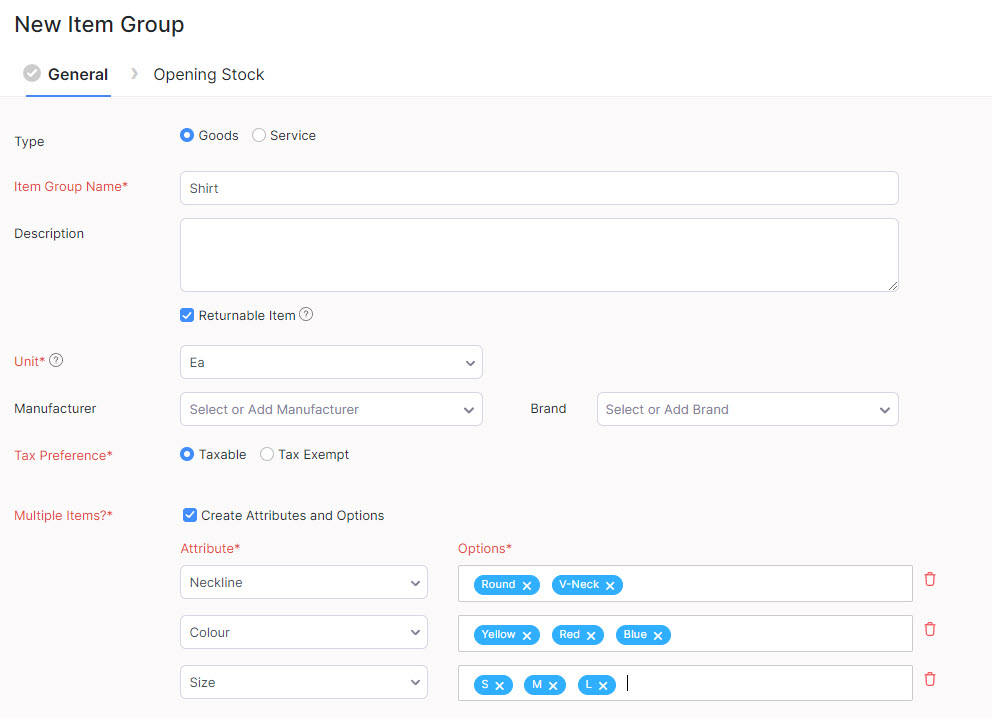
Once all the individual details for the attributes have been entered, you will note the items will be created in the lower section. You can remove any items by selecting the “x” on the side of the item.

All sections indicated in red and marked with an asterisk must be updated before you are able to save. After you have saved, you can come back and complete further changes to the items, by selecting the pencil.
Zoho Inventory also gives you functionality to create new items in a existing group. You do these by selecting the existing Item Group and clicking Add Item. You can then create the item and specify the attributes as required.

Lastly another great feature of Group Items is the ability to group together existing items for easier management. These items may be similar, but not variables of the same item.
You simply select the items you wish to group together and click ‘Add to Group’ from the drop down menu. From there you can define the parameters of your group.
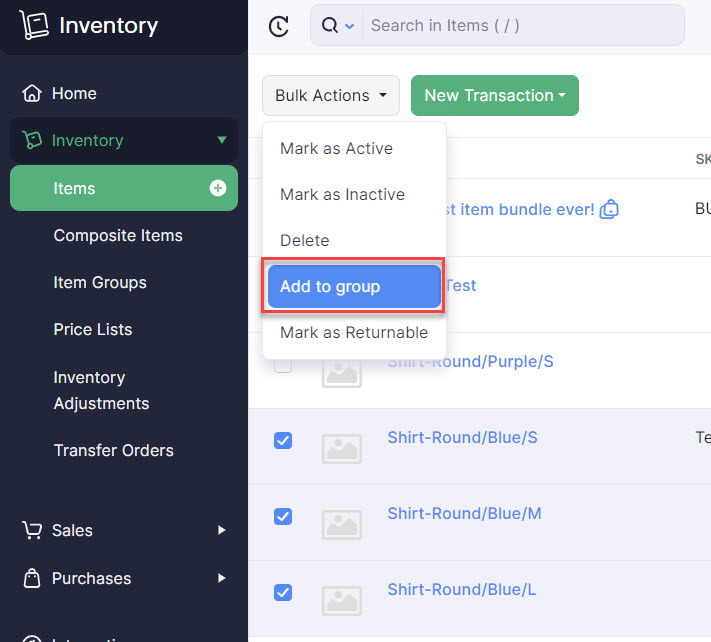
And that covers the various item types within Zoho Inventory!
Feel free to get in touch with the Ardento team if you are considering Zoho Inventory or would like some assistance making the most of your Zoho system.




